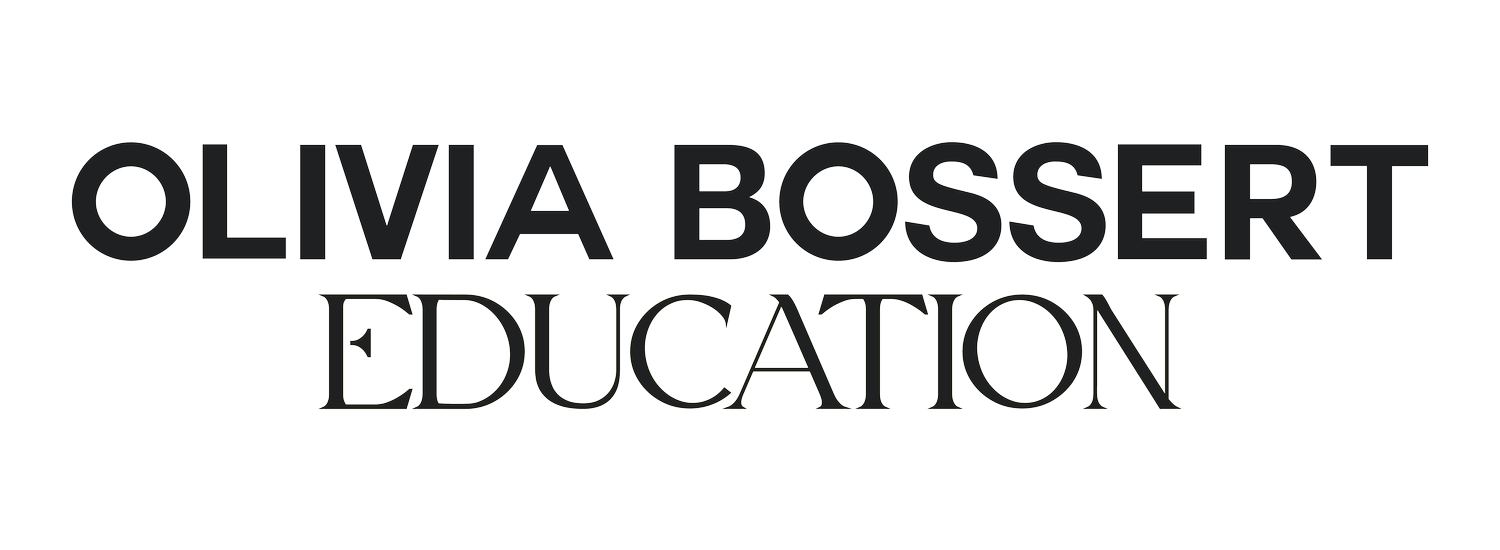The Complete Guide to Planning a Fashion Photoshoot (2025 Edition)
The Ultimate 10-Step Guide for Photographers Who Want to Shoot Like a Pro by Olivia Bossert Education
If you’re tired of winging fashion shoots, this post is for you. Whether you’re building your portfolio or producing high-level editorial work, you need more than just inspiration — you need structure.
In this guide, I’m breaking down exactly how I plan every photoshoot, from initial idea to final call sheet. These are the exact steps I use when working with agencies and creative teams, and I promise — once you adopt this process, you’ll never go back.
Let’s get into it.
1. Start with a Brain Dump
Before you open Pinterest or start scouting models, write everything down.
What’s the concept?
What gap in your portfolio are you trying to fill?
Are you inspired by a specific color palette? Location? Garment? Lighting technique?
What is the purpose of this shoot - editorial submission, campaign test, or just pure creativity?
Don’t worry about order or polish. Just get the ideas out. Once they’re on paper (or Notion, if that’s your thing), you’ll start to see themes emerge.
2. Build Mood Boards (Plural!)
Don’t stop at just one generic mood board — go deeper.
Overall concept board: the vibe and visual style.
Styling board: specific garments, colors, textures.
Hair & makeup board: exact looks, not just “soft glam” or “edgy”.
Lighting board: natural light? Flash-heavy? Shadows? Mood?
Use Vogue Runway, Pinterest, and archive magazines. Avoid looking at other photographers on Instagram unless you're very intentional - it can dilute your vision.
3. Create a Lighting Plan
This is where most emerging photographers skip ahead, but it’s a huge mistake.
Will you use natural light or artificial?
Front lit? Backlit? Side-lit?
Do you want consistency or variation across the looks?
Map out lighting setups for each shot or outfit change. If you’re working with an assistant or tech, they’ll thank you for it.
4. Write a Real Shot List
This is not the same as a mood board. Your shot list should include:
Camera angles (full-body, ¾, beauty shots)
Model poses (standing, seated, motion)
Lighting setups for each shot
Background or set requirements
Outfit breakdowns
Think of it like storyboarding a film. It’s your roadmap - and yes, you can still improvise on the day.
5. Plan Styling, Hair & Makeup
Even if you’re working with a stylist or MUA, you are the creative director of the shoot. You need to give them direction.
Examples:
Styling: “All white looks with sharp tailoring,” or “Layered textures in burnt oranges and reds.”
Hair: “Wet look slicked back,” or “Braids wrapped around the crown.”
Makeup: “Monochrome look in rose tones,” or “Glossy lid, nude lip, brushed-up brows.”
Include references in your prep documents, not just text descriptions.
6. Cast the Right Model
Models aren’t interchangeable. You need someone who matches the vision.
Are you shooting beauty? Look for expressive eyes, symmetrical features, great skin.
Fashion editorial? Focus on bone structure, posing ability, and presence.
Hair/makeup test? Don’t choose someone with bangs if you want to show a graphic liner look!
Work with agencies if you can. If not, use Instagram, street casting, or referrals - just cast intentionally.
Handle the Logistics
Now for the unsexy stuff, but it’s what makes or breaks the shoot.
Book your location: Studio? AirBnB? Rooftop at golden hour?
Lock in the date: Make sure it works for everyone on the team.
Coordinate times: Use a WhatsApp group or shared Google Calendar invite.
Tip: Visit your location in advance or ask for a walkthrough video if it’s unfamiliar.
8. Create a Shoot Timeline
No one likes running overtime and eating cold pizza at 10 p.m. Plan a timeline that includes:
Call time
Hair/makeup duration
Time for each outfit/look
Lighting setup changes
Model breaks + meals
Wrap + pack-up time
Buffer everything by 15–30 minutes. Trust me.
9. Build Your Creative Team
If you’re new to working with teams, start with Instagram. Look at who other photographers collaborate with, and don’t be afraid to reach out.
Can't book your dream stylist? Ask if they can recommend an assistant or junior. Build relationships now - these people might be your go-to crew for years.
10. Make a Call Sheet
This is your final prep document. It should include:
Date + call time
Location + address
Contact info (yours + producer/assistant/stylist)
Emergency details (nearest pharmacy, first aid kit, etc.)
Mood board
Shot list
Outfit breakdowns
Send it 48–72 hours before the shoot. It shows you’re organized, and it gets everyone aligned.Structure = Freedom
You might be thinking, “This feels like overkill.” But here’s the truth: The best shoots don’t happen by chance - they’re planned.
This system gives you freedom on set because you’ve done the work beforehand. You’ll shoot faster, more confidently, and create work that actually matches the vision in your head.
And when your team sees how prepared you are? They’ll want to work with you again.
-Olivia

